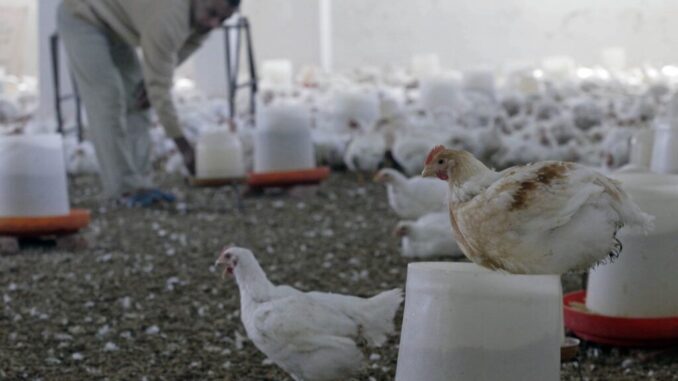
Poultry production declined by 20%, from 4 million broilers per day to only 800,000, reported Mada Masr
Mada Masr also said that there is a relative decline in poultry and fodder prices due to a decline in demand
Poultry market prices have decreased by about 22%, compared to a peak in their prices in January, as a result of the decline in consumer demand.
Also, the exit of 80% of poultry breeders caused a decline in the demand for feed, Mohamed Saleh, a member of the Poultry Producers Union, said.
The price of white poultry for consumers has now reached about 70 Egyptian pounds per kilo, compared to about EGP 90 in January.
Meanwhile, feed prices declined from their highest level in mid-April, when they exceeded 30,000 pounds per ton, to 20,000 pounds per ton on average now.
After the exit of more than 22,000 out of 28,000 small and medium farms, the daily production of poultry in Egypt decreased from four million birds per day to 800,000 broilers, said Saleh.
Commrnting on these terrifying figures, Ashram, an X user, tweeted: “Poultry production declined by 20%, from 4 million broilers per day to only 800,000. This is terrifying, I swear by God, and generations will be suffering from malnutrition.”
He added: Those who used to eat a chicken a day now eat a chicken a week. However, people remain silent for fear of hurting their dignity.
Based on data from the Central Agency for Public Mobilization and Statistics last August, meat and poultry prices increased by 93.4% on an annual basis.
A study issued by the agency last year showed a decline in the consumption of animal proteins by 90% of households, compared to an increase in their consumption of bread and legumes, while 74% of households reduced their consumption of food commodities due to the high prices.
The import crisis, which affected most sectors of food production, in light of the shortage of hard currency and the unprecedented rise in inflation levels, caused heavy losses to poultry farmers, due to the shortage of fodder, of which Egypt imports about 95%, as well as the rise in prices to record levels.
The import crisis has created a gap of 28% of the needs of the animal production sectors of feed during the last ten months, according to data from the Ministry of Agriculture.
The total releases amounted to seven million tons in ten months, while the market needs nine million tons to cover the total needs of the same period.
Exit rates from the market appeared more in small farms and some medium farms, which alone represent 80% of the productive capacity of the market, while large farms continued with reduced capacity, reaching 40% at most of the capacity of the wards, according to Saleh.
Despite the gap, the decline in the rate of breeders’ demand for fodder, in addition to the decline in global input prices of corn and soy, contributed to lowering the prices of fodder, a former poultry producer explained, on condition of anonymity.
Corn lost 31% of its value over the past year, dropping to $235 per ton, while soybean fell to $590 during the same period, losing about 25% of its price, according to one of the largest grain importers.



